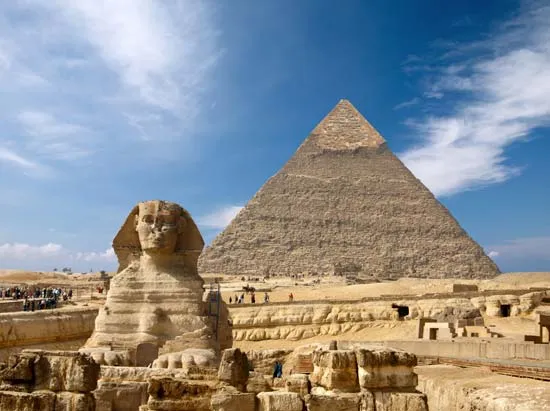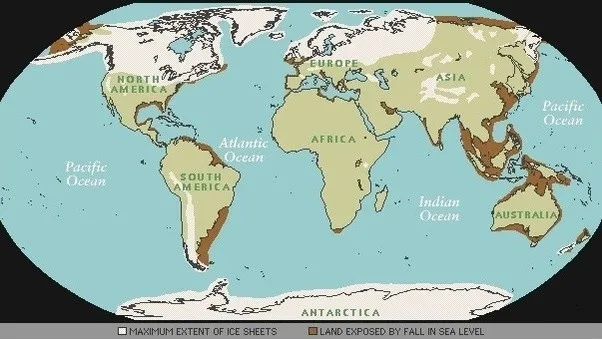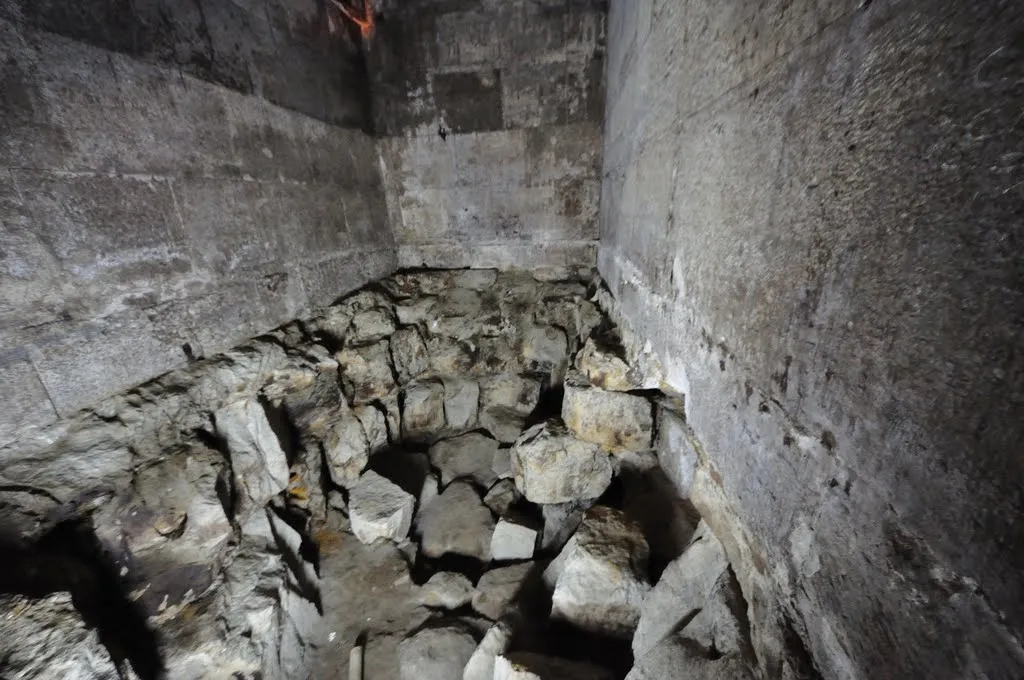"A great Civilization must have preceded the vast movements of water that passed over Egypt. Which leads us to assume that the Sphinx already existed, sculpted in the rock of the west cliff at Giza. That Sphinx's leonine body except for the head shows Indisputable signs of aquatic erosion."

Water weathering in the Sahara, here? Well there hasn't been any significant rainfall in Egypt for at least 7,000 years. The Sahara itself is a relatively new desert, forming around 10,000 BC.
This in itself dates the Sphinx to at least 5,000 BC.
The water weathering is found on the walls of the Sphinx exposure, as well as the body, everything except the head shows signs of water weathering. The head of the Sphinx was originally that of a lion and re-carved sometime later in the likeness of a pharaoh.
John Anthony West takes a more radical estimate, which is in keeping with the ancient Egyptian records themselves. Perhaps the Sphinx is a marker of the age of Leo, it does have a Leonine so this isn't too much of a stretch . A marker of the age of Leo, just what does that mean?
Well, the last age of Leo began at around 10,500 BC lasting until around 8,000 BC. So at around 10,500BC the Sphinx was aligned and looking at it's own image in the sky when it rises against the sun at the time of the equinox. There is one problem with this date though and it is something that nobody disagrees with, at this time in earths history the whole planet was in chaos after the breakup of the last ice age. Caused by a comet impact on the north American ice sheet, this impact vaporised 2km high sheets of ice, which spanned from Canada to parts of Europe. The result was that the planet was plunged into chaos with floods of Biblical proportions destroying everything in their path. (I'm not making this shit up, the planet was going through some pretty fucking terrible things at this time, as were the ancients living on it.)

A prerequisite for building a timeless monument like the Sphinx is surely a long settled period where there isn't much going on (AKA the entire planet plagued by inclement weather for a very long time.) This gives us one other option for correctly dating the Sphinx if it is in fact a marker of the age of Leo. If we push the construction of the Sphinx back one whole astrological cycle (The length of one cycle of twelve ages is 25,860 years) we get an even more staggering figure, 36,000 BC. This date corresponds to the Egyptian texts themselves (Part I covers this a little.) Learn more about the precession of the equinoxes here.
Another peculiar piece of evidence for water weathering in Egypt lies beneath the Red pyramid of Dahshur. There is a chamber in the pyramid known as a plundered tomb chamber. This cannot be the case however, as the blocks that make up this tomb have already been weathered.

And yet these bricks are completely protected by the Pyramid that has been built over it. For that weathering to have occurred, they would of had to have been exposed to the elements for a very long period of time. What we have here is a prior construction, megalithic in it's appearance. Similar to the barrows of Scotland, England and, Wales; rather than a typical classical interior of an Egyptian pyramid. It could not get weathered if it were just a single stage of Pyramid construction.
what do you guys think, could it be possible that the Sphinx is much older than we perceive?
Let me know in the comments. Thanks for reading, see you shortly for part III